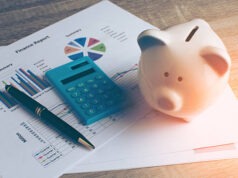
How much do you have sitting in your emergency fund? Are the savings low—or worse, non-existent? Then you need to make some changes. Take a look at how you can use your personal tech to build yourself an emergency fund and boost the savings sitting inside of it.
Start a Budget
Before you get started on your emergency fund, you need to have a personal budget. A personal budget will help you determine how much of your income you can dedicate to your emergency fund without disrupting your ability to cover other essentials (utility bills, groceries, etc.).The easiest way to start putting together a comprehensive budget is to pull out your smartphone and download one of the top budgeting apps on it.
Why not fill out the budget on a spreadsheet program? Budgeting apps offer benefits that can make saving so much easier — and by extension, so much faster.
Budgeting apps can sync up with your online banking, which will give you an accurate view of your income and real-time updates about your digital transactions. Not only will this let you know exactly how much you’re bringing in and how much you’re spending every month, but it will also show you whether you’re actually following the guidelines that you set in your budget.
Another benefit of modern budgeting apps is that they can help you set and track your savings goals. So, if your goal is to put $1000 in an emergency fund by the end of the year, you can insert that into your app’s plan and track your progress as time goes on.
Automate Your Savings
Your emergency fund won’t grow very quickly when you continue to miss contributions. To make sure that you never forget to put those savings away, you can automate your contributions through your online banking. Think of it like automating a bill payment—only you’re paying yourself instead of a creditor.
Round-Up Your Change
Collecting your spare change is a great financial habit to stick with. Instead of letting your coins or small bills sit at the bottom of your coat pockets, desk drawers or couch cushions, you gather them in a jar. The habit will quickly show you that this spare change adds up, and you have a lot more savings than you anticipated.
Round-up apps can help you do the same thing with your digital funds. Apps like Qapital and Chime will round up purchases you made with your debit card to the nearest whole number. The rounded-up funds won’t go toward the transaction — they will be put towards your savings goal (like an emergency fund). The contributions are small, but just like with your change jar, they add up over time.
Cut Your Monthly Costs
Your tech can help you reduce some of your budgetary expenses so that you have more savings to put toward your emergency fund. Bigger monthly contributions will help you fill up your fund faster.
So, what can you do to cut costs?
- Use couponing websites, apps and browser extensions to spend less when you shop
- Use apps like GasBuddy to find more affordable gas in your area
- Use apps like SpotHero to find more affordable parking in your area
- Use apps like Truebill to help you track and cancel unwanted subscriptions
Use bill negotiation services to help you lower the costs of utility bills and subscriptions that you want to keep
Why Should You Have an Emergency Fund?
An emergency fund is an excellent safety net to set up for yourself. When an emergency expense crops up, you rely on your fund for a quick recovery. All you have to do is withdraw the necessary amount from the fund to cover the expense. It’s that simple.
Without an emergency fund, dealing with urgent, surprise expenses can be a real challenge. You could use money from your paycheck to cover the expenses, but if you do, you run the risk of sabotaging your essential payments for the rest of the month. What if you don’t have enough money left to pay for groceries? What if this pushes you to pay your bills late? What if you accidentally bounce a check? Turning to your paycheck in this scenario could destabilize your finances.
Your other options are to turn to credit. You could charge an emergency expense to your credit card and steadily pay down the balance afterward. Or you could apply for an online line of credit loan and see whether your application gets approved. If it is, you could use the borrowed funds from your line of credit loan to cover the emergency expense quickly. Then, you could follow the steady repayment process.
It’s clear that an emergency fund is your best bet for handling emergency expenses. So, take this as a sign to get started on yours right now.



































